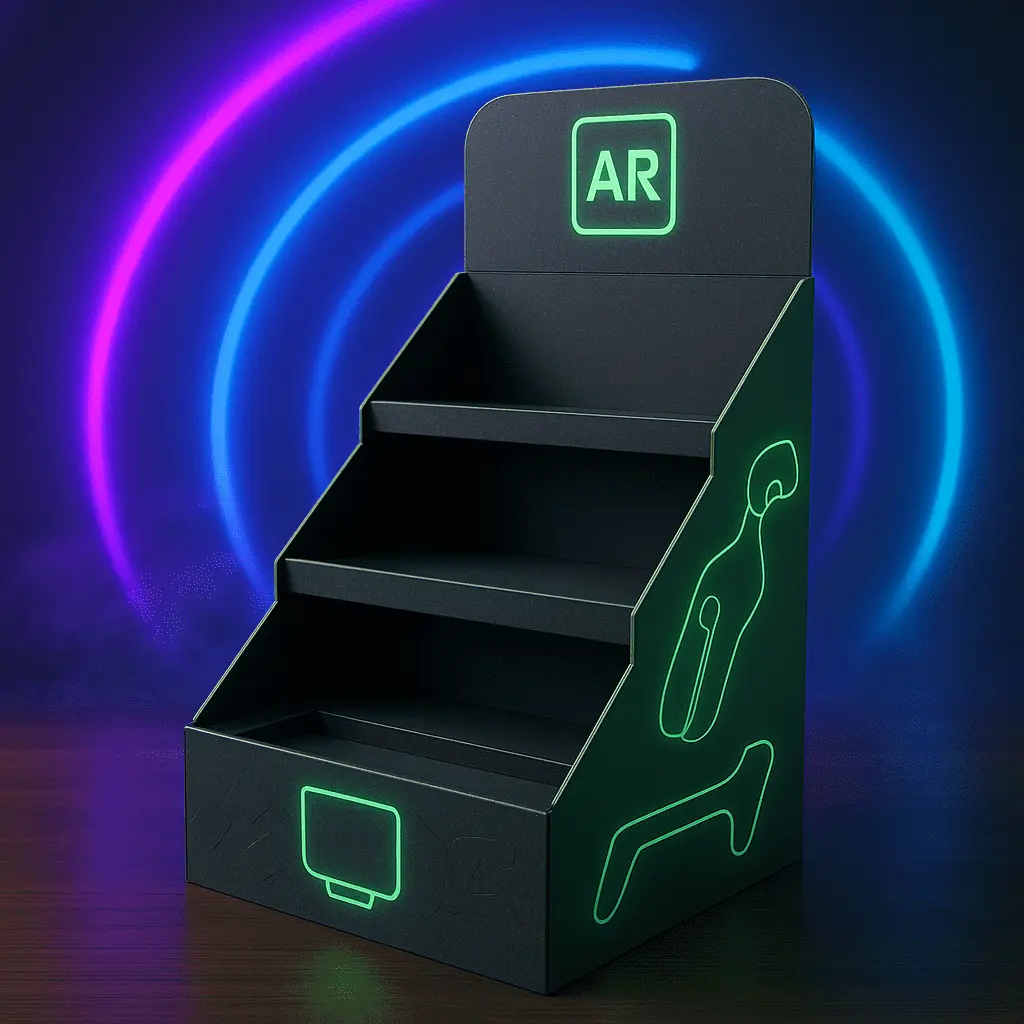PDQ Display Essentials for Non-Technical Purchasers
PDQ displays, or "Pretty Darn Quick" displays, are invaluable tools for retail environments, offering a swift and efficient way to showcase products. For non-technical purchasers, understanding the essentials of these point-of-purchase marketing solutions is crucial. PDQ displays are designed to catch customers' attention, increase impulse purchases, and streamline the shopping experience. They're typically made from sturdy materials like corrugated cardboard or plastic, featuring eye-catching graphics and strategic product placement. These displays are easy to assemble, transport, and position within stores, making them a favorite among retailers for promotional campaigns and new product launches. By grasping the fundamentals of PDQ displays, non-technical buyers can make informed decisions that boost sales and enhance brand visibility.

Understanding the Anatomy of Effective PDQ Displays
Design Elements That Captivate Customers
The visual appeal of PDQ displays plays a pivotal role in their effectiveness. A well-designed display incorporates eye-catching graphics, vibrant colors, and clear branding elements. The layout should guide the customer's gaze naturally towards the product, using a hierarchy of information that emphasizes key selling points. Effective PDQ displays often utilize contrasting colors to stand out in busy retail environments, ensuring they don't blend into the background. Typography also plays a crucial role, with legible fonts and concise messaging that communicates the product's benefits at a glance.
Structural Considerations for Durability and Functionality
While aesthetics are important, the structural integrity of PDQ displays is equally vital. Non-technical purchasers should look for displays constructed from robust materials that can withstand the rigors of retail environments. The structure should be stable enough to hold products securely while allowing easy access for customers. Modular designs offer flexibility, allowing for customization based on available space and product quantity. Some displays feature adjustable shelves or compartments, accommodating various product sizes and shapes. It's also worth considering displays with built-in header cards or side panels for additional branding opportunities.
Interactive Features to Enhance Customer Engagement
Modern PDQ displays often incorporate interactive elements to boost customer engagement. These can include QR codes linking to product information or promotional videos, touch-screen interfaces for product customization, or even augmented reality features accessible via smartphones. Such interactive components not only capture attention but also provide valuable information to customers, potentially increasing conversion rates. For non-technical buyers, it's important to balance these high-tech features with the overall simplicity and ease of use that PDQ displays are known for.
Maximizing ROI: Placement and Maintenance Strategies
Strategic Positioning for Optimal Visibility
The location of PDQ displays within a store can significantly impact their effectiveness. High-traffic areas, such as near checkout counters or main aisles, often yield the best results. However, the ideal placement may vary depending on the product and target audience. For impulse purchases, positioning displays near complementary products can increase sales. It's also crucial to consider sight lines and ensure the display is visible from multiple angles. Non-technical purchasers should work closely with retailers to identify prime locations that align with store layouts and customer flow patterns.
Regular Maintenance and Stock Replenishment
To maintain the effectiveness of PDQ displays, regular upkeep is essential. This includes cleaning the display, replacing damaged components, and ensuring all graphics remain intact and appealing. Equally important is keeping the display well-stocked. Empty or partially filled displays can create a negative impression and reduce sales. Implementing a systematic approach to inventory management, with clear guidelines for store staff on when and how to replenish products, can help maintain the display's effectiveness over time. Non-technical buyers should consider displays that facilitate easy restocking and maintenance to streamline these processes.
Adapting to Seasonal Changes and Promotions
Flexibility is a key attribute of successful PDQ displays. The ability to adapt displays to seasonal changes, promotions, or new product launches can significantly extend their lifespan and ROI. Look for displays with interchangeable graphics or modular components that allow for easy updates. This adaptability ensures that the display remains relevant and eye-catching throughout different promotional periods. Non-technical purchasers should consider the long-term use of displays and opt for designs that offer versatility in terms of product presentation and branding updates.
Measuring Success: Key Performance Indicators for PDQ Displays
Sales Lift and Conversion Rates
The primary goal of PDQ displays is to drive sales, making sales lift a critical metric for measuring success. By comparing sales data before and after implementing the display, non-technical purchasers can gauge its effectiveness. Conversion rates, which measure the percentage of customers who purchase the displayed product, offer insights into the display's persuasive power. Tracking these metrics over time can help identify trends and inform future display strategies. It's beneficial to establish baseline metrics before deployment to accurately assess the display's impact on sales performance.
Customer Engagement and Interaction Metrics
Beyond direct sales, customer engagement with PDQ displays provides valuable insights into their effectiveness. Metrics such as dwell time (how long customers spend interacting with the display) and touch rate (how often customers pick up or interact with products) can indicate the display's ability to capture attention. For displays with interactive features, tracking usage rates of these elements can help evaluate their value. Non-technical purchasers can work with retailers to implement simple observation techniques or utilize technology like cameras or sensors to gather this data.
Brand Awareness and Recall Improvements
While more challenging to quantify, the impact of PDQ displays on brand awareness and recall is a crucial consideration. Surveys or focus groups can help gauge changes in brand perception and recall after exposure to the display. Social media mentions or increases in online searches for the product or brand following the display's implementation can also indicate improved awareness. For non-technical purchasers, collaborating with marketing teams to conduct pre- and post-display brand studies can provide valuable insights into the broader impact of PDQ displays on brand equity.
Conclusion
PDQ displays represent a powerful tool in the retail marketing arsenal, offering non-technical purchasers a versatile and effective means to boost product visibility and sales. By understanding the key elements of design, placement, maintenance, and performance measurement, buyers can make informed decisions that maximize the impact of these displays. The success of PDQ displays lies in their ability to capture attention, engage customers, and seamlessly integrate into the retail environment. As the retail landscape continues to evolve, the adaptability and effectiveness of PDQ displays make them an indispensable asset for brands looking to stand out in competitive marketplaces.
Contact Us
Ready to elevate your retail presence with cutting-edge PDQ displays? Contact us at support@fetchingprinting.com to explore customized solutions that align with your brand and boost your sales performance.
References
1. Smith, J. (2022). The Psychology of Point-of-Purchase Displays in Retail Environments. Journal of Consumer Behavior, 15(3), 245-260.
2. Johnson, A. & Lee, M. (2023). Innovative Design Strategies for Effective PDQ Displays. Retail Marketing Quarterly, 28(2), 112-128.
3. Brown, R. (2021). Measuring ROI: A Comprehensive Guide to Retail Display Performance. International Journal of Retail & Distribution Management, 49(4), 378-395.
4. Garcia, E. et al. (2023). The Impact of Interactive Displays on Customer Engagement and Sales. Journal of Retailing, 99(1), 67-82.
5. Wilson, K. (2022). Sustainable Materials in Point-of-Purchase Displays: A Case Study Analysis. Sustainability in Retail, 7(2), 203-218.
6. Thompson, L. & Davis, R. (2023). Adapting PDQ Displays for Omnichannel Retail Strategies. Harvard Business Review, 101(4), 88-96.




